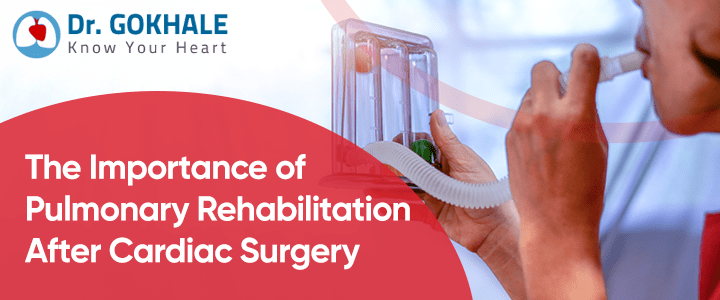Cardiac surgery is a life-changing procedure that can help improve the quality of life for individuals with heart conditions. However, the road to recovery is an essential component of achieving full health.
A lot of attention is placed on the immediate period after the surgery, a crucial part that deserves due attention is pulmonary rehabilitation. Pulmonary rehabilitation plays an important role in ensuring a smooth and successful recovery after cardiac surgery. This article will focus on what pulmonary rehabilitation is, the importance of pulmonary rehabilitation after heart surgery and its benefits.
Understanding the Pulmonary Rehabilitation
Cardiac surgery involves heart transplant, valve repair or replacement, and coronary artery bypass grafting(CABG), and these surgeries can have a significant impact on the lungs. Pulmonary Rehabilitation refers to a series of therapeutic actions designed to improve the functioning of the lungs and respiratory system, as lungs could have been impacted due to various factors like anaesthesia during surgery, length of the surgery or the recovery process.
The cardiac surgery and its healing process may lead to complications such as weakness of the respiratory muscle, lung volume reduction and breathing abnormalities. Pulmonary rehabilitation involves and combines various breathing techniques, psychological and emotional support, exercise training, and nutritional support for patients to regain their lung function and improve overall health.
Importance of Pulmonary Rehabilitation after Surgery
Here are the various reasons that pulmonary rehab program for heart patients matters:
- Improving Respiration: After heart surgery, the lungs may become stiff or may not function as effectively due to several factors. Pulmonary Rehabilitation helps reverse these effects by focusing on improving circulation, encouraging proper lung expansion and diminishing the risks of pulmonary conditions.
- Enhance Stamina and Exercise Tolerance: The rehabilitation focuses on helping patients gradually, over time, increase their physical activities to counteract shortness of breath and fatigue. By performing breathing exercises and physical activities, lung capacity and volume can be increased, improving physical endurance to carry out daily activities.
- Reduces Risk of Respiratory Infections: Patients, after operations, usually carry a severe risk of post-operative infections because of limited capacity to clear out mucus, which can lead to coughing, wheezing and chest pain. The exercises are vital in minimising infection, which can severely affect recovery.
- Improve Quality of Life: The lungs play an important role in heart recovery after surgery as oxygen is needed for tissue healing, and when the pulmonary system functions well, that contributes to quicker recovery more effectively.
- Mental and Emotional Support: Pulmonary Rehabilitation addresses the patient’s physical, mental, and emotional health after surgery. Counselling and support reduce feelings of isolation and depression during the recovery period.
Role of the Best Cardiothoracic Surgeon
The role of the surgeon is crucial when considering pulmonary rehabilitation after surgery, as their focus is not only on the operation but also on post-operation and guiding the patient through the recovery process. The surgeons work with physical therapists and pulmonary specialists to create a personalised patient rehabilitation plan.
Final Thoughts
Pulmonary rehabilitation is essential to cardiac surgery recovery to ensure long-term health and well-being. After a minimally invasive cardiac surgery in Hyderabad, following the optimum pulmonary practices is imperative to ensure a smooth recovery process. If you are unsure if this surgery is for you, connect withDr Gokhale.
 Ask Doctor
Ask Doctor
